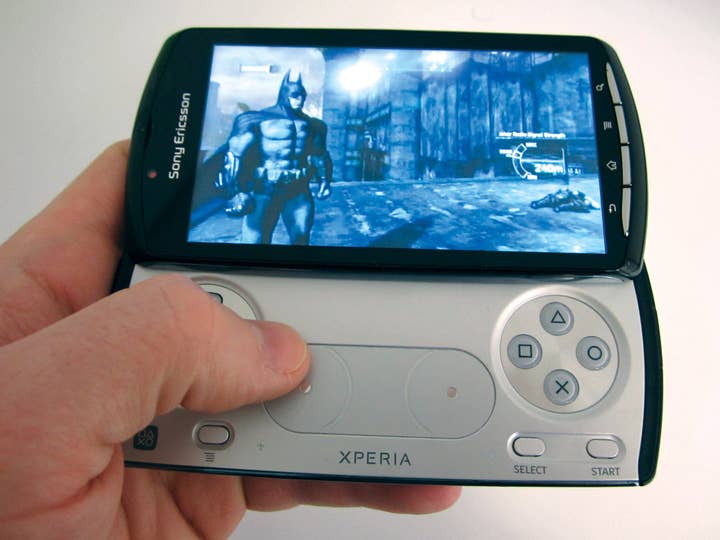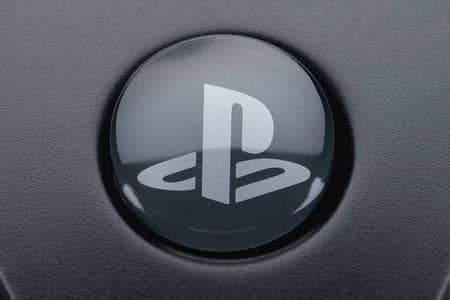Sony's Cloud Platform: The New Gaming Frontier
Digital Foundry on why the Gaikai acquisition goes beyond simply streaming PlayStation games
Despite some bizarre denials, the news that Sony was going to move into the cloud gaming space ranks as one of the worst-kept secrets in the games business, leaked to the press over a month before the official announcement. Perhaps what is more surprising in the light of Monday's confirmation of the Gaikai acquisition is that we still have very little idea of what it all actually means for the gamer.
"Gaikai is more than just a delivery platform for existing content - in the hands of Sony's game devs, the possibilities for new gaming experiences built for the system from the ground-up are mouth-watering."
The only additional piece of detail that tells us much of interest is that it's Sony Computer Entertainment that is the buyer, meaning that this is a PlayStation deal, not just a shot of gaming adrenaline into the arm of the company's ailing HDTV business. Sony's statements on its plans for the cloud sound suitably grand, but don't really tell us anything we didn't already know anyway:
"By combining Gaikai's resources including its technological strength and engineering talent with SCE's extensive game platform knowledge and experience, SCE will provide users with unparalleled cloud entertainment experiences," explained SCE overlord Andrew House.
"SCE will deliver a world-class cloud-streaming service that allows users to instantly enjoy a broad array of content ranging from immersive core games with rich graphics to casual content anytime, anywhere on a variety of internet-connected devices."
The obvious conclusion to take from this would be the migration of existing and planned PlayStation content to Gaikai infrastructure, representing an enticing opportunity: state-of-the-art titles in combination with an enormous back catalogue running on an ever-expanding range of streaming devices. Kotaku ran with a great headline on this story yesterday: You May Already Own PlayStation 4.
To a certain extent, we've already had a preview of just how cool cloud streaming the latest games can be: on Digital Foundry at Eurogamer, we've already suggested that OnLive running on an Xperia Play smartphone offers something approaching a true next-gen handheld experience: latency is still an issue but downscaling an HD image onto a smaller, mobile mobile screen solves many of the image quality issues that have blighted cloud gameplay thus far, and the overall effect can be very impressive. It's a taste of the future, and improvements to infrastructure in combination with server-side technological advances are almost certain to turn what is currently a great tech demo into a viable cross-device gaming platform.


Looking at things from a more short-term perspective, there's already been some talk that we could see Gaikai tech implemented to supply playable demos. While this is a possibility (running PC versions on the existing Gaikai network), there's a strong chance that developers and publishers wouldn't want to see their console games represented on the PlayStation Network in this way - perhaps it would be better to use streaming tech to get demos seen by a new audience, one perhaps not so concerned with matters like input lag or video quality - things that are noticed by the core audience.
I would hope that Sony would take a more measured approach in how Gaikai is deployed, especially as there are major technological issues to overcome in integrating the technology into the PlayStation Network. Gaikai's chosen infrastructure uses a completely different hardware architecture to any PlayStation platform, past or present. Sony has traditionally created its own gaming hardware, while David Perry's outfit uses server farms based on Intel processors and NVIDIA graphics cores.
"Streaming existing PlayStation content over Gaikai can't happen overnight - the cloud infrastructure runs on fundamentally different architecture - Sony will need time to adapt."
The obvious solution would be to roll-out a mass of back-compat PlayStation 3s to the Gaikai datacentres, perhaps utilising a variation of Sony's Remote Play technology to get everything integrated fairly easily. Unfortunately, this wouldn't produce very good results: even when using a local network, Remote Play is very laggy, and factoring in the internet would reduce a sub-optimal experience to a borderline unplayable one on any fast-action game. This approach would fly in the face of all the hard work Gaikai has done in making cloud gaming work, and to be frank, Sony could do it themselves without forking out $380m for the privilege. It's the know-how, tech and infrastructure that Sony has paid for.
The basics of "how cloud works" in providing a playable experience are fairly straightforward: the idea is to get close to current console latency by running games at 60Hz (or even higher) compared to current console standards of 30Hz. Running game code at twice the speed has the effect of significantly lowering input lag: the time you save is then budgeted towards encoding/transmission/decoding of game video. Conceivably this technique could be applied to Sony's back catalogue titles running under PC emulation - and the platform holder knows plenty about that.
For PS1 and PSP, Sony already has extremely strong software emulators that can run virtually any piece of software - this is how PS3 can run any PS1 title, and how Vita can host PSP downloaded games. The company is also starting to roll out PS2 titles for the PlayStation 3 that run entirely using software emulation - an impressive technical achievement in its own right. All of these different emulators could be ported to PC and deployed on Gaikai servers - the performance of the PCSX2 open source emu suggests that the 60FPS gameplay cloud thrives upon shouldn't be a problem.


Getting PlayStation 3 titles playable on cloud hardware is going to be a lot more challenging: while the RSX graphics core is essentially an off-the-shelf PC GPU NVIDIA repurposed for the console, the Cell Broadband Engine - in particular its SPUs - are phenomenally fast. Emulating those in real-time - let alone at the 2x real-time required to get the latency saving - is going to be a huge challenge. Third parties at least can use their existing PC versions, but for Sony's own PS3 games we are facing a Hobson's choice of creating a PC port from scratch, or else running code with no optimisations for latency.
With the forthcoming PS4 apparently based on PC tech, things look rosier. The option exists to create specific cloud hardware that could run the same code, or else two SKUs could be developed - one for the local PS4, the other for the cloud datacentres. If, as expected, Orbis is based on AMD CPUs and GPUs, either option could work.
"Using cloud as a mechanism for enabling instant access to Sony's enviable back catalogue of PS1 and PS2 titles could work - but PlayStation 3 streaming would be very challenging to execute well."
Of course, all of this assumes that Sony wants to run more modern games on its newly acquired cloud network. In assessing the "sci-fi" elements of what Gaikai offers, it's easy to ignore a few basic realities about the way Sony does business. If it can make more money by selling PS3 hardware, it will continue to do so and probably wouldn't want to upset the apple cart. We already know that PlayStation 4 will be a traditional retail console release - it has to be, simply by virtue of the fact that not everyone can access a decent internet connection. A cloud streaming service would be another option for select customers, and certainly not a replacement platform.
There's also the small matter that being able to stream PS3/PS4 games onto PlayStation Vita could have the unintended consequence of completely decimating the market for games specifically built for that system. Indeed, the reasons for buying Vita at all in the first place diminish radically if you can just stream PS3/PS4 titles onto your Nexus 7 tablet with USB joypad attached. Bearing in mind how deeply invested in hardware Sony is, you have to wonder just how open this particular cloud platform will be.
There's been some discussion about Sony potentially disrupting itself with this new acquisition, but in the short to medium term at least, it's difficult to see the company rolling out a delivery platform that could wreak havoc on its existing businesses, especially when what we are dealing with is an emerging technology that still has a lot to prove, and really needs infrastructure improvements to truly thrive. On top of that, while it is a company in transition, Sony has traditionally been a somewhat conservatively run business - we would expect its cloud platform to be introduced slowly as a complement to its existing offerings.
So how best to manage the arrival of cloud gaming into the PlayStation family? The beauty of the platform is that you can run it on virtually any piece of hardware with a decoder chip - but that doesn't necessarily mean that streaming PS3/PS4 games over IP is the best use for that technology based on its current shortcomings. The opportunities here are staggering for a company with Sony's game dev resources - this deal offers so much more than simply apeing OnLive's current offering.
One potential alternative that could work beautifully in the here and now is to create bespoke games based around the strengths of the cloud platform. Why shoehorn in PS3/PS4 games that aren't the best fit for the platform when you can make your own games designed from the ground up with the strengths of cloud specifically in mind?
"Cloud could be so much more than just another publishing platform - games built around the strengths of the hardware could be revolutionary and Sony has the in-house talent to make this happen."
Certain art-styles favour real-time video compression more than others, while some game-types aren't as impacted by inconsistent controller response as others. Factor in the strengths of Gaikai's cloud servers - masses of RAM, virtually unlimited storage, enormous levels of interconnectivity between servers, NVIDIA Tesla GPU rendering, access to the video streams of every user - and we have the core ingredients for game experiences that simply wouldn't be possible on a local console.
This is the principal difference between Sony and OnLive: Steve Perlman's outfit is basically a distribution platform, reliant on others for content - in short, there is no exclusivity: every OnLive title can be played elsewhere. Sony doesn't just publish games, it owns a rich array of hugely talented development studios that custom build games specific to the PlayStation platforms. Put the Gaikai hardware in their hands and I'm willing to bet that the results would be magnificent.
Far from replacing existing consoles and simply streaming those games over IP, we could see the emergence of a brand new format, capable of experiences with a size and scale, and levels of interconnectivity we've never played before - games that could run on all of Sony's existing consoles, its HDTVs and PlayStation-certified mobile phones. Think about this for a moment: a Naughty Dog or Sony Santa Monica game built from the ground up, designed with cloud hardware in mind? The possibilities are mouth-watering.

